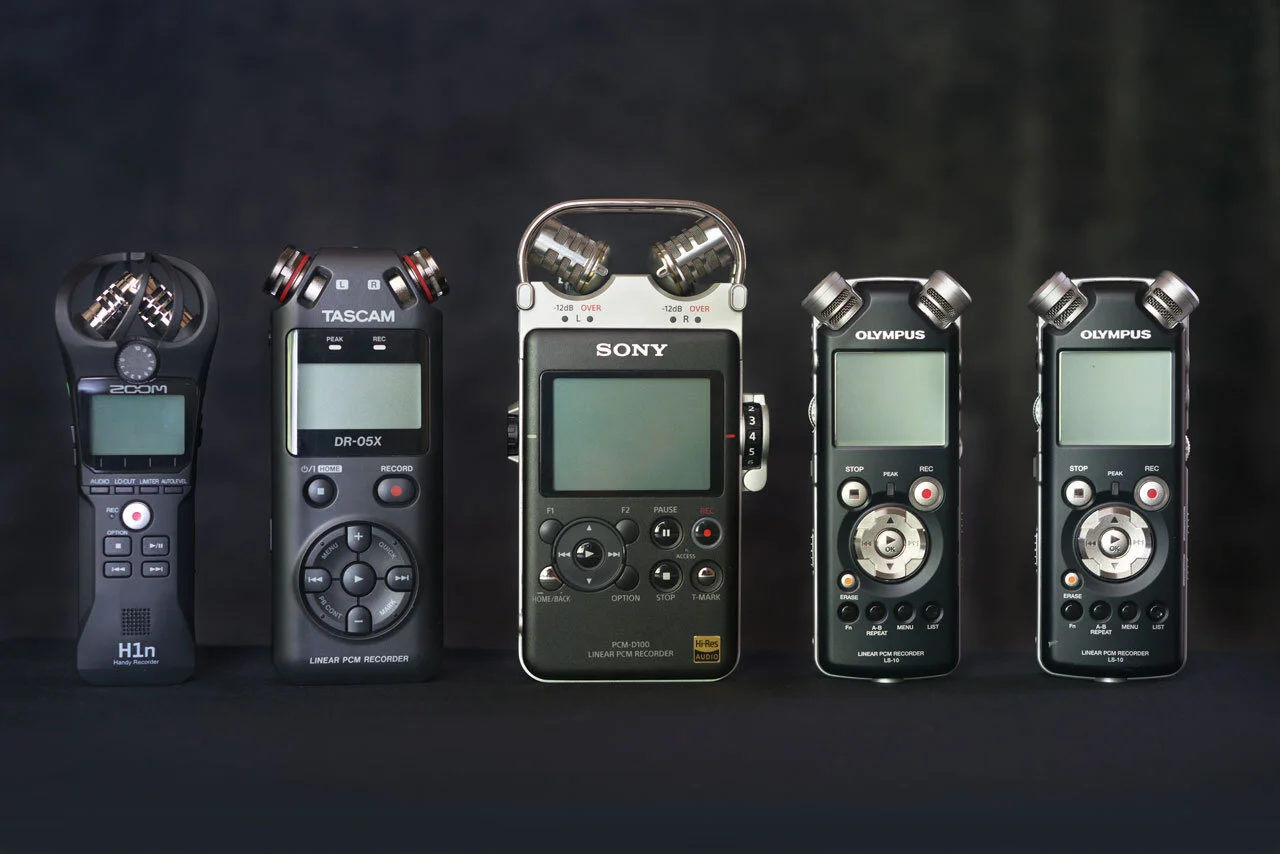

My motivation for getting started in field recording was natural sounds. I wanted to bring the sounds of nature to my home so I could always listen to them. To do this, I needed to know what the best recorder for the job would be.
This article is a presentation of my research on my quest to find the best field recorder for nature sounds. By reading, you will learn about field recorder self-noise and how to select the quietest recorder for your needs/budget.
Links on this page are affiliated with Sovrn and Amazon Associates networks.
Recording the sounds of nature will push your gear to its limits. That’s because natural sounds are not well suited for low-noise recordings. They are quiet, detailed and tend to run away from people.
Have you ever recorded a quiet ambiance, but when you listen to the recording you hear an ever-present hissing sound? No, this is not the wind, this is the noise of your recorder (self-noise).
In the example above, the quiet ambiance is your signal, the intentional subject of the recording. The unintentional, background hiss is the noise. The comparison between signal loudness and noise loudness is called the signal-to-noise ratio (SNR).
This background noise is undesirable for two reasons. First, it distracts from your main subject (signal) and, if loud enough, can overpower your signal entirely. Second, it records information not truly present.
To me, reproducing the sounds of nature as we actually hear them is very important. The presence of electronic noise distorts and pollutes the natural sound.
To prevent the noise from becoming a distraction, we need to maximize our SNR.
We can increase the SNR in two ways. Either by increasing the volume of the signal, or by decreasing the volume of the noise.
Signal strength can be increased by getting closer to your subject or by using a shotgun or parabolic microphone to bring your subject closer to you. The less distance between you and your signal, the louder it will be.
You may think that increasing your gain will increase signal strength and thus, your SNR. While this will make your signal louder, increasing the gain also increases the noise from your recorder, leaving you no better off than before.
The second way to maximize SNR is by decreasing the noise. The best way to do this is by opting for a low-noise recorder.
Not all field recorders are created equal. Some are more noisy than others. Some companies spend lots of money designing low-noise circuits inside their recorders. This expense is reflected in the price of low-noise recorders. Because of this, you tend to get what you pay for, although there are some exceptions.
For the highest quality recordings, you’ll want to get the lowest noise recorder you can afford.
While there are certainly many factors and specifications behind every field recorder, we can greatly simplify our research to focus on one variable: field recorder self-noise. This factor will make the largest audible difference between recorders when dealing with quiet nature sounds.
When I tried researching this, I was discouraged to learn two things. First, not all manufacturers disclose the self-noise level of their recorders. And second, if this specification is provided, the units vary.
Self-noise can be measured as SNR, equivalent input noise, or just as self-noise. These varying methods make it impossible to compare different recorders. I tried researching how to convert from one measurement to another but could not find anything with confidence.
Thankfully, during my continued research, I found the holy grail.
Avisoft Bioacoustics is a company who makes highly specialized software for processing wildlife audio. They also happen to test field recorder self-noise levels through controlled testing, AND they have a table of their results ranking recorders from most quiet to loudest! Check it out here.
As it turns out, this is quite a popular resource in the field recording community. Having a list of the lowest self-noise recorders available is priceless.
I have used this resource to determine the best handheld field recorders for nature sounds. My top three recommendations fall under the categories: Best Overall, Best Budget and Best Features. See them below!